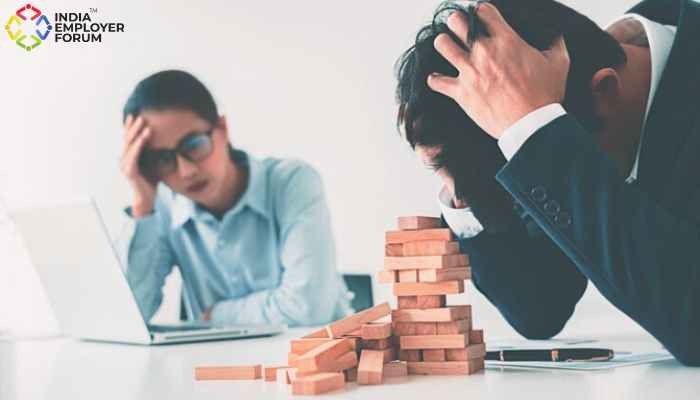The economic effects of the COVID-19 pandemic will still be felt in the years to come. Businesses came to a complete standstill with the near-zero demand of all but essential services and the disruption in supply. While lay-offs and pay cuts have been commonplace, industries like travel, tourism and hospitality were plunged into the limbo of uncertainty. In today’s intricately woven global economy, no country could steer clear of the domino effect of such an unforeseen crisis.
Developing nations like India have a fragile economic and social fabric. Over 81% of India’s workforce is made up of those in the informal sector, which also happens to be the most vulnerable. The Indian government’s initiatives to promote education, provide training and create employment opportunities were showing promise. A 2019 UNDP report showed that India had managed to raise 271 million people out of poverty between 2009 and 2016. However, all efforts came undone over the past year. In fact, in March alone 121 million workers were out of work. The sudden surge in demand for healthcare services meant that low income households had limited access to it. Children who couldn’t afford the luxury of online classes have been out of school for a better part of the year. However, economists say that if we are to ride out this crisis, India must tap into its human capital. With over 44% of the population under the age of 25, the youth could be the driving force behind reimagining and reconstructing the country’s economy.
You might also be interested to read: Importance of Strategic Human Capital Plan
Human capital is the economic value of the human skills in a workplace that influence productivity. The income of Indians is largely disproportionate therefore making manpower planning for human capital development essential in order to develop various sectors of the economy. Skills or qualities of labor include higher education, technical training, health and also employability skills. As of today, India ranks 116th on the World Bank’s Human Capital Index report. This is largely to the massive income inequality that plagues the country’s population. India’s richest 1% hold more than four-times the wealth held by 953 million people who make up for the bottom 70% of the country’s population. Those who barely manage to stay above the poverty line still struggle to find access to education, training and basic healthcare.
The need of the hour is for the government to focus on human development rather than the brick and mortar development that makes the news. Being the second largest population in the world makes us a pool of untapped potential. Imagine the scope of development we could see if the workforce transitioned from the unskilled majority that it is today, to a trained and skilled workforce armed with creative thinking and a problem solving mindset. Policies must aim at supporting children right from birth and create a pathway for them to join a skilled workforce.
Healthcare initiatives must be stepped up. Although life expectancy numbers have improved, healthcare after birth still has much ground to cover. Despite being a leading producer and exporter of vaccines, India is home to one-third of the world’s unimmunized children. Fewer than 44% of India’s young children receive the full schedule of immunizations. While the success of the polio drive enjoys the limelight, health departments must push to raise awareness about other diseases, vaccinations, nutrition, sanitation and lifestyle.
Education is a fundamental right for all Indian children aged 6 to 14 under the Right to Education (RTE) Act of 2009. While this aims to improve the quality of education and make it accessible for children from low income sections of society, the ground reality is different. Lack of infrastructure, inadequate teacher quality and training, and an aging curriculum is what stands in the way of children receiving proper education. India’s student to teacher ratio stands at 24:1 which is lower than Brazil’s and China’s 19:1. Many institutions, especially in rural areas, face high vacancies in teaching positions. As per the ministry’s All India Survey on Higher Education statistics, while student enrolments in higher education institutes have increased from 32.3 million to 36.6 million between 2014 and 2018, the total number of teachers have declined from 13,67,535 to 12,84,755. Building more schools is not a solution in itself. While infrastructure is important, the government must look to incentivise teaching roles and ensure they undergo the right training programs. The curriculum for higher education must be updated to focus on employability skills that are in growing demand as India continues to open its doors to foreign direct investment.
Gender inequality is a major obstacle in India’s path to realising the full potential of its human capital. 48% of India’s population is female, but women represent only 29% of the labour force. More than half the work done by women is unpaid and falls in the informal and unprotected category. As a result, female contribution to the GDP sits at 17%, much lower than the global average of 37%. Government social protection programs have shown a slow but positive change in driving women to join the workforce. However, there should be structures in place that ensure more girls enrol in schools and go on to complete their higher education without dropping out. They must be trained to acquire the employability skills needed in the professional sphere. Equal opportunities and wages must be provided to women while policies must protect their rights. There should be incentives for working women who are also primary caregivers in their homes.
If India is to recover from the economic setback of the pandemic it must address the pitfalls that restrict it from realising the potential of its human capital. While there has been investment in these areas, projects and schemes have not been followed through. It is at the local level that government intervention is required, with constant monitoring and data collection.
Reference: V-shaped recovery anticipated, but it’s the human capital base of economy that needs care, Ajit Ranade points out” | Ajit Ranade | 21 December 2020
You might also be interested to read:
Related Topics:




